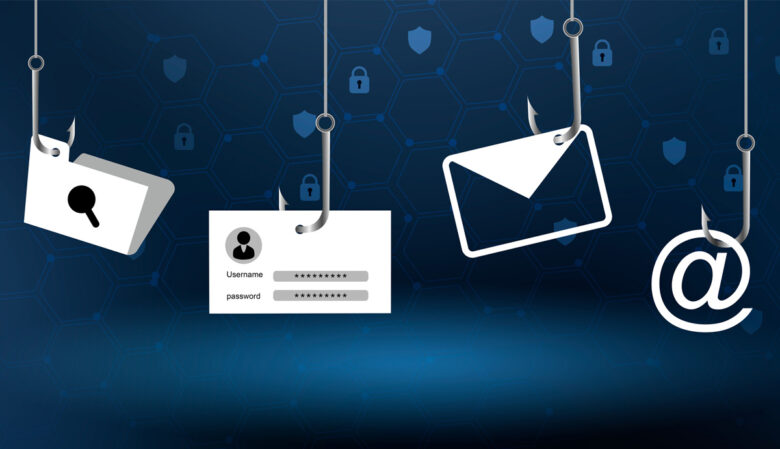Phishing is one of the most serious cyberthreats in today’s digital landscape. By 2025, these scams will be even more sophisticated, leveraging artificial intelligence and machine learning to deceive users. Typo-based scams and poorly written emails will become obsolete. Modern phishing tactics are highly personalized, sophisticated, and difficult to detect. Cybercriminals can target you through emails, text messages, social media, and phone calls. Because so much of our personal and financial information is stored online, falling for these scams can lead to identity theft and the loss of bank accounts. This article explains phishing, the warning signs for 2025, and the best defenses. Stay vigilant and alert so you can confidently navigate the digital world while protecting your data.
Understanding Phishing in 2025
Criminals pose as reputable organizations, friends, or services to steal sensitive information through phishing. By 2025, phishing will have expanded beyond the “Nigerian Prince” email. Scammers are increasingly using AI-generated emails, deepfake phone calls, and similar websites. These attacks aim to steal passwords, credit card numbers, Social Security numbers, and online account login credentials. Today, phishing attacks are so adaptable that they are deadly. Cybercriminals use stolen data and browser activity to create customized attacks that appear legitimate. For example, you might receive a fake email about renewing a bank transaction or an email about a streaming subscription. By understanding modern phishing, you can recognize suspicious behavior, even if it appears legitimate.
Understand the Red Flags of Phishing
To recognize phishing in 2025, vigilance and critical thinking are essential. Urgent emails—messages that require quick action, such as password resets, account verification, or bill payments—are a significant concern. Cybercriminals exploit panic to weaken defenses. Unexpected requests for sensitive data are another red flag. No reputable organization would release passwords, financial information, or security codes via email or text message. Always check links. Phishing sites use URLs that appear authentic but contain minor spelling errors or extra letters. AI-powered scams can be perfectly branded, making them harder to detect, but checking the sender’s address can reveal a breach. Finally, trust your instincts. If something seems off, pause and double-check before clicking or replying to an email. Recognizing these subtle cues may be your best defense against phishing.
How Cybercriminals Are Using AI to Improve Phishing
By 2025, AI will make phishing even more risky. Hackers are using AI to examine data, mimic writing styles, and create realistic emails that align with your habits. For example, an email from your boss about a recent assignment or a fake invoice that matches your purchase history might appear. Scammers use AI in voice phishing, also known as vishing, to impersonate colleagues or service providers through deepfakes. AI-powered chatbots, which converse with users before spreading malicious links, are exploiting social media. Phishing today focuses not only on grammar but primarily on understanding how attackers can exploit context and emotion to deceive you. Knowing that phishing is powered by AI should encourage consumers to carefully examine every request, no matter how legitimate.
Best Measures to Prevent Phishing Fraud
To prevent phishing fraud in 2025, be proactive with your cybersecurity. First, enable multifactor authentication (MFA) on all critical accounts. Even if a hacker obtains your password, MFA makes access more difficult. Second, keep your applications, software, and devices up to date. Phishing scams often use malware that exploits older systems. Third, use reliable antivirus and anti-phishing software to detect unknown emails and websites. Fourth, avoid public Wi-Fi networks, as unsecured networks increase the risk of phishing. Finally, educate yourself and others. Sharing phishing prevention tips with friends, family, and colleagues strengthens our collective defense against cybercrime. Safe behavior is more important than technical expertise in preventing phishing. Vigilance makes you a harder target for scammers.
Conclusion
Phishing attacks will be smarter, more deceptive, and more dangerous by 2025. AI-driven attacks allow thieves to create virtually identical scams or messages. You can prevent scams by maintaining good security awareness and taking appropriate precautions. By looking for red flags, questioning unusual requests, using multi-factor authentication (MFA) and antivirus software, and staying informed about cyber risks, you can significantly reduce your risk of attack. Avoiding phishing is like digital street smarts: be cautious, verify names, and don’t let haste cloud your judgment. Phishing attacks evolve with technology, but your defenses evolve along with it. For peace of mind in a connected world, it pays to be vigilant about your digital life. You might be able to outwit scammers if you remain vigilant and proactive.
FAQs
1. Why will phishing attacks be more dangerous in 2025?
Modern phishing attacks use AI and deepfakes to create convincing text messages and phone calls that are harder to detect.
2. How can you easily recognize a fraudulent email?
Evaluate the urgency of the email, suspicious sender addresses, and URLs that don’t resemble legitimate websites. Always check official channels before responding.
3. Does multi-factor authentication completely prevent phishing?
Multi-factor authentication (MFA) offers effective protection, but it’s not completely immune. Hackers can still trick you into revealing your code.
4. Is clicking on a phishing link always dangerous?
Not always, but occasionally it is. Links can download malware or redirect you to a mobile login page. If you accidentally click on one, close the page and run a security scan.
5. Should I report phishing?
Reporting phishing to your email provider, your company’s security team, or your cybercrime department can help others avoid phishing.



